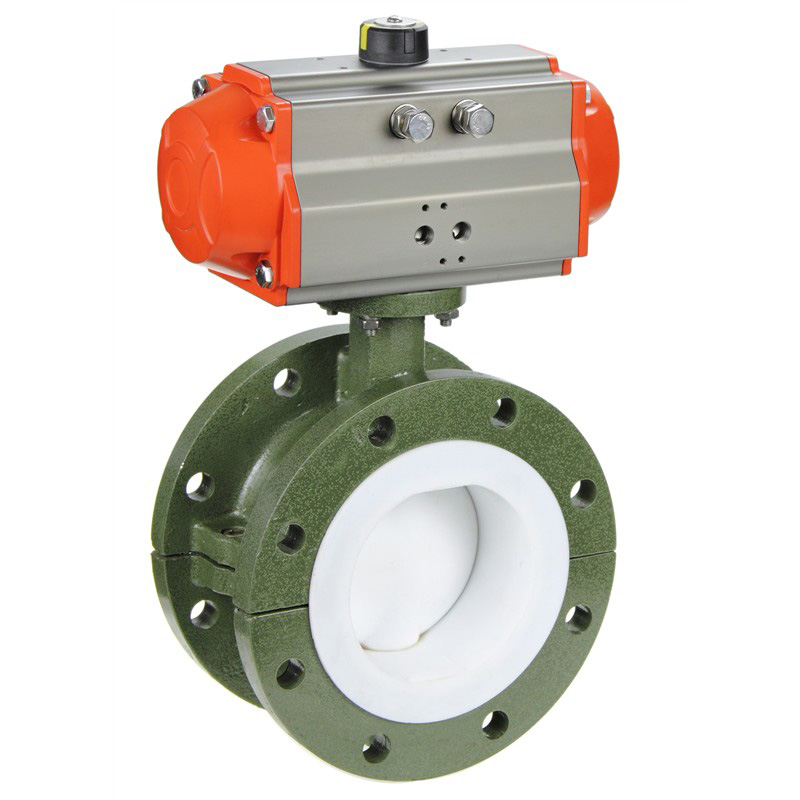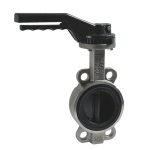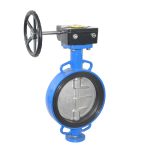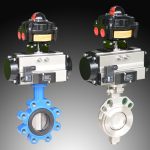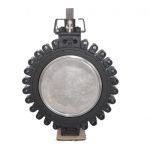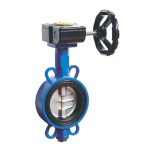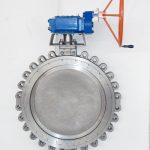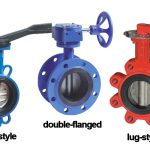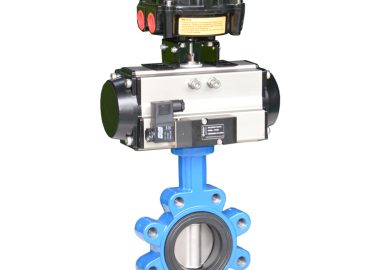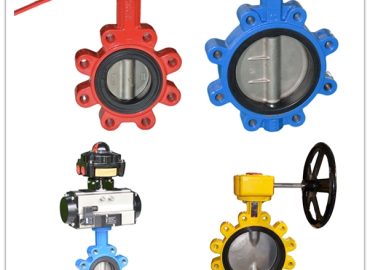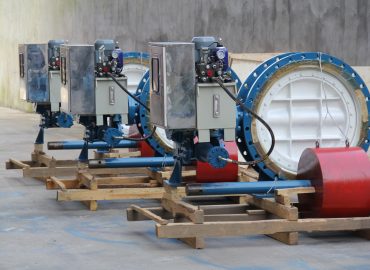Butterfly valves are a popular type of control valve used in a variety of industrial applications for their reliability and efficient flow control capabilities. However, the performance of a butterfly valve is heavily influenced by its dimensions. The size, shape, and thickness of the valve components play a critical role in determining the valve’s ability to regulate flow, withstand pressure and temperature variations, and provide reliable shutoff. Understanding the impact of valve dimensions on performance is essential for ensuring optimal functionality and minimizing safety hazards. In this blog post, we will explore the various dimensions of a butterfly valve and how they affect its performance.
Introduction
The dimensions of a wafer butterfly valve play a crucial role in regulating fluid flow and ensuring optimal performance in industrial applications. Key valve dimensions, such as disc diameter, thickness, and angle, determine the valve’s ability to control flow, withstand pressure and temperature variations, and provide reliable shutoff. The wrong dimensions result in reduced efficiency, increased energy consumption, and potential safety hazards. Therefore, engineers and design professionals must pay close attention to the valve dimensions when selecting and designing valve applications. By understanding the effects of valve dimensions on performance, they can make well-informed decisions on selecting the right valve size, shape, and thickness for optimal flow control in the application.
Explanation of what a butterfly valve is and how it works
A butterfly valve is a control valve used to regulate fluid flow in industrial applications. It is called a lug butterfly valve because of its butterfly-shaped disk that rotates to control the flow of fluid. The disk is mounted on a shaft and rotates 90 degrees to open or close the valve. When fully opened, the disk is perpendicular to the flow of fluid, allowing for maximum flow. When fully closed, the disk is parallel to the flow of fluid, which stops the flow entirely. Butterfly valves are commonly used in industries that deal with liquids, slurries, and gases, such as chemical processing, food and beverage, and water treatment plants.
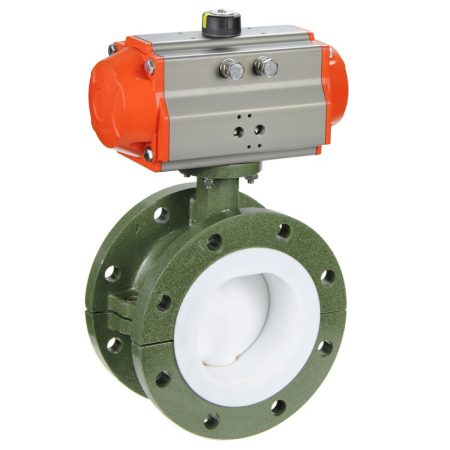
Explanation of why valve dimensions are important for its performance
Valve dimensions are critical for the performance of butterfly valves because they determine how effectively the valve can control fluid flow in an industrial setting. A poorly sized valve can result in reduced efficiency, increased energy consumption, and safety hazards. For example, if the valve disc diameter is too small for the application, it may cause pressure drops and limit flow capacity. The thickness of the valve also plays a significant role in its durability, temperature tolerance, and shutoff ability. Additionally, the angle of the valve disc affects the valve’s ability to regulate flow and shut off. Therefore, selecting the proper valve dimensions is essential for optimizing functionality, efficiency, and safety in industrial settings.
Brief mention of the main points that will be covered in the post
In this blog post, we will explore the importance of valve dimensions for the performance of butterfly valves in industrial settings. We will discuss the impact of key valve dimensions, such as disc diameter, thickness, and angle, on flow control, pressure and temperature tolerance, and shutoff ability. Additionally, we will highlight other factors to consider, such as piping size and compatibility with the valve, industry type, and fluid type, when selecting and designing valve applications. By understanding the effects of valve dimensions on performance, engineering and design professionals can make well-informed decisions to ensure optimal functionality, efficiency, and safety in industrial settings.
Valve Dimensions and Their Impact on Performance
Valve dimensions, such as disc diameter, thickness, and angle, are crucial for the performance of butterfly valves in industrial settings. The disc diameter plays a significant role in flow rate and pressure drop. A larger diameter disc allows for greater flow capacity and minimized pressure drop, while a smaller diameter disc can cause pressure drop and flow limitations. The valve’s thickness also impacts its temperature tolerance, durability, and lifespan. A thicker valve can withstand higher temperatures, resist wear, and last longer. The angle of the valve disc affects the valve’s ability to regulate flow and shutoff effectively. A larger angle allows for greater flow control, while a smaller angle provides better shutoff capability. By considering these factors during valve selection and design, engineers can ensure the optimal performance of butterfly valves in industrial settings.
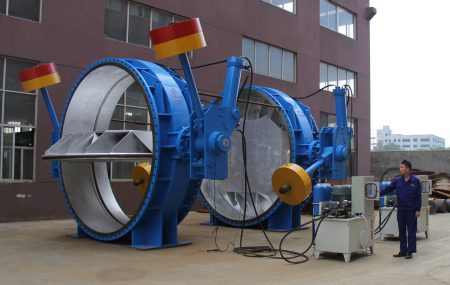
Importance of valve disc diameter
Valve disc diameter is a crucial factor for the performance of butterfly valves. The size of the valve disc determines the flow rate and pressure drop of the valve. A larger diameter disc offers higher flow capacity, reduces pressure drop, and improves efficiency. However, it is important to ensure that the disc size is compatible with the piping and application requirements of the system. Conversely, a small diameter disc limits flow capacity and can cause pressure drops, leading to reduced efficiency and increased energy consumption. Therefore, selecting the appropriate valve disc diameter is crucial for ensuring optimal performance. By carefully considering the flow requirements and system characteristics, engineers can choose the appropriate valve disc diameter to provide reliable and efficient flow control.
Significance of valve thickness
Valve thickness is another important factor for the performance of butterfly valves. The thickness of the valve determines its temperature tolerance, durability, and lifespan. Thicker valves are able to withstand higher temperatures, resist wear, and last longer than thinner valves. However, the thickness of the valve should be balanced with its weight, as heavy valves can lead to increased energy consumption and decreased efficiency. It is also important to note that a thicker valve may not always be the best option, as certain applications may require a thinner valve. Therefore, selecting the appropriate valve thickness is crucial for achieving optimal performance in industrial settings, and it requires careful consideration of the system requirements and application-specific variables.
Importance of disc angle
The angle of the valve disc is another important factor that affects the performance of butterfly valves. The disc angle determines the valve’s ability to regulate flow and shutoff. A larger angle allows for greater flow control, while a smaller angle provides better shutoff capability. The ideal disc angle depends on the specific application and system requirements. In addition, disc angle affects the valve’s ability to respond to changes in flow rate and pressure, making it important to carefully consider system characteristics when selecting the appropriate disc angle for a butterfly valve. By selecting the optimal disc angle, engineers can ensure that the valve provides accurate, reliable flow control and shutoff capability in industrial settings.
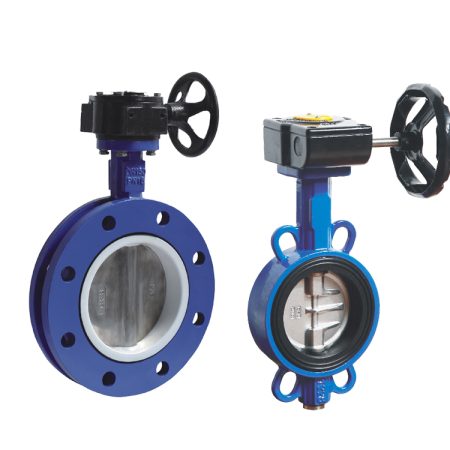
Other Factors to Consider
While valve dimensions such as disc diameter, thickness, and angle play a critical role in electric butterfly valve performance, other factors also need to be considered when selecting and designing valve applications. Piping size and compatibility with the valve can impact the flow rate and pressure in a system. The type of industry where the valve will be applied should also be considered, such as corrosive medium considerations and temperature range considerations. The fluid to be controlled is another important factor, as some fluids require more precise regulation than others. Understanding other factors such as these is important for ensuring that butterfly valves are selected and designed to meet the specific requirements of a given industrial application.
Piping size and compatibility with the valve
Piping size and compatibility with the valve are important factors to consider when selecting and designing butterfly valve applications. The size of the piping system and the compatibility of the valve with the piping system can affect the valve’s flow rate and pressure regulation capacities. If the valve size is too small for the piping system, it can result in a reduced flow rate and increased pressure drop. On the other hand, if the valve size is too large, it can lead to excessive turbulence and reduced effectiveness at regulating flow rates and pressure. Therefore, it is important to carefully evaluate piping size when selecting and designing butterfly valves. Compatibility with the valve is also important, since it determines whether or not the valve can effectively regulate flow in a given system. By carefully considering the compatibility of the valve with the piping system, engineers can ensure that the valve operates efficiently and effectively in industrial settings.
The type of industry where the valve will be applied
The type of industry where the butterfly valve will be applied is another crucial factor to consider during valve selection and design. Different industries have varying requirements and regulations regarding fluid flow control, such as corrosive medium considerations and temperature range considerations. For example, the food and beverage industry requires valves that can be easily cleaned and sterilized, while the petrochemical industry requires valves that can withstand harsh chemical environments. Additionally, certain industries may require specific valve materials, such as stainless steel or PVC, to maintain fluid purity and prevent contamination. Understanding these specific industry requirements is important for ensuring that the selected butterfly valve is appropriate for the specific industrial application, can operate efficiently and meets all required standards and regulations.
The fluid to be controlled
The fluid to be controlled in a system is another important factor to consider during butterfly valve selection and design. Different fluids have unique flow requirements and may require specialized valve features to ensure optimal performance. For example, fluids with high viscosity may require a valve with a larger disc diameter to prevent clogging and flow restrictions. Similarly, fluids that are highly abrasive may require a valve with a thicker disc to prevent wear and extend valve lifespan. Understanding the fluid characteristics and requirements is crucial for selecting a butterfly valve that can effectively regulate fluid flow and operate efficiently in the system. By considering the specific fluid properties, engineers can ensure that the selected butterfly valve is appropriate for the specific application for which it is intended and can provide optimal performance.
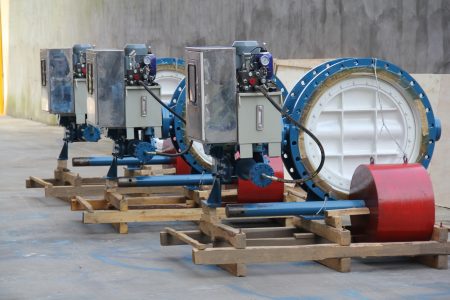
Conclusion
In conclusion, the performance of butterfly valves in industrial settings is heavily influenced by the dimensions of the valve. Factors such as disc diameter, thickness, and angle must be carefully considered to ensure that the valve can regulate fluid flow effectively, withstand harsh conditions, and last for a long time. A poorly chosen valve dimension can lead to reduced efficiency, increased energy consumption, and even safety concerns. Engineers and designers must also consider other factors, such as piping size, industry type, and fluid type, to ensure that the valve is compatible with the system and can operate efficiently under specific environmental conditions.
Valve dimensions are critical for achieving reliable and accurate fluid flow control. A correctly sized valve ensures that flow is regulated effectively, and that the system operates efficiently. It is important to remember that valve dimensions alone do not dictate the effectiveness of a butterfly valve in industrial settings. Factors such as valve design, material, and quality also play an important role in the valve’s performance. Therefore, choosing the right valve dimensions is just one of the many steps needed to ensure optimal performance of butterfly valves in industrial settings.
In the end, selecting the optimal valve dimensions for a butterfly valve requires careful consideration of the specific needs and requirements of the system. Engineers and designers must have a deep understanding of the application at hand, including the system’s objectives, limitations, and specifications. By taking into account all relevant factors, a well-designed butterfly valve can provide reliable and accurate flow control that achieves system objectives and yields long-term benefits.
Recap of the main points of the post
In summary, this blog post examined the importance of valve dimensions for the performance of butterfly valves in industrial settings. Emphasis was placed on key valve dimensions including disc diameter, thickness, and angle, which significantly impact flow control, pressure and temperature tolerance, and shutoff ability. Additionally, other critical factors such as piping size and compatibility with the valve, industry type, and fluid type were highlighted. It was concluded that selecting the right valve dimensions is crucial in achieving optimal functionality, efficiency, and safety in industrial settings. By paying careful attention to valve dimensions, engineers and design professionals can make informed decisions when selecting and designing valve applications.
Final thoughts on the importance of valve dimensions for valve performance
Valve dimensions are critical for the optimal performance of butterfly valves in industrial settings. Correctly sized valves ensure efficient fluid flow regulation, decreased energy consumption, and reliable shutoff capability. Valve dimensions such as disc diameter, thickness, and angle, are particularly important as they directly impact the valvular performance. Therefore, engineers must carefully consider these dimensions while selecting and designing valve applications to meet the specific requirements of each industrial setting. Ultimately, properly designed valves enhance system performance and safety, leading to reduced downtime, decreased maintenance costs, and an overall improvement in system efficiency.
Encouragement to connect with a valve engineering or manufacturing expert, such as those at (company name), for further assistance
While understanding the importance of valve dimensions is crucial, selecting the right control valve for your industrial application can be a complex process. Therefore, it is highly encouraged to seek out the assistance of valve engineering or manufacturing experts, such as those at (company name), who have the expertise and experience to offer invaluable guidance and support. These experts can provide insight into valve design, materials, and quality and help you identify the most suitable valve dimensions for your specific needs. With their help, you can ensure that you have the appropriate valve dimensions to achieve optimal performance and efficiency in your industrial system. Do not hesitate to reach out to experts for further assistance with selecting and designing butterfly valves.


